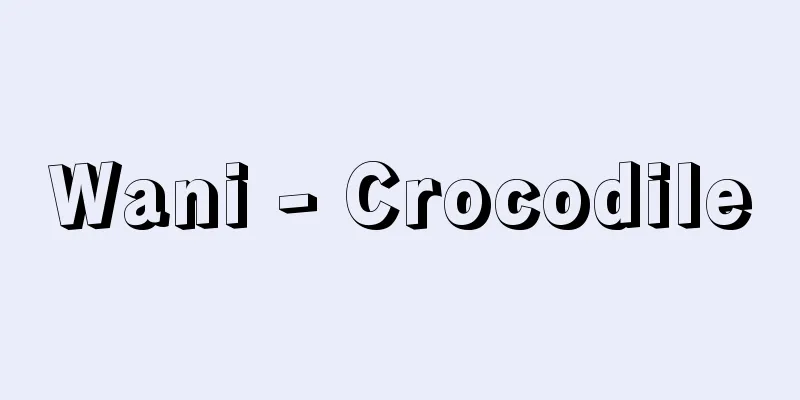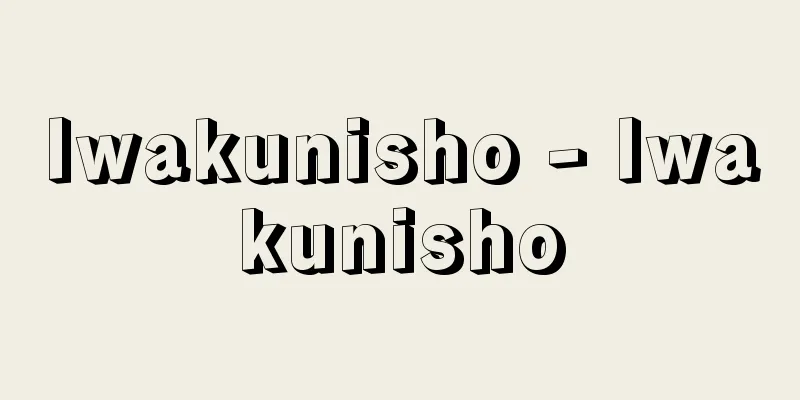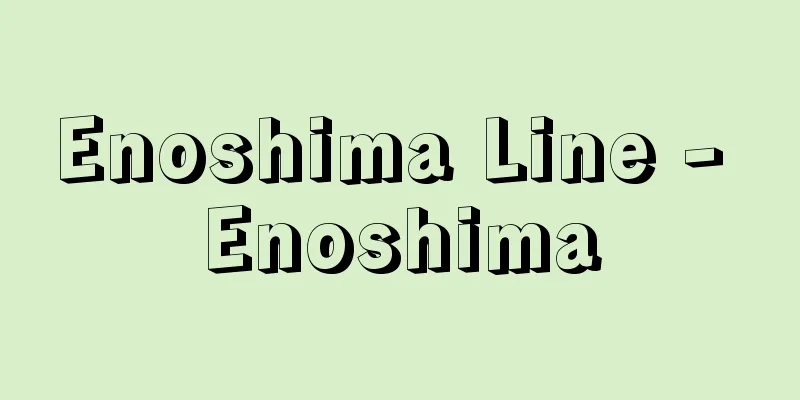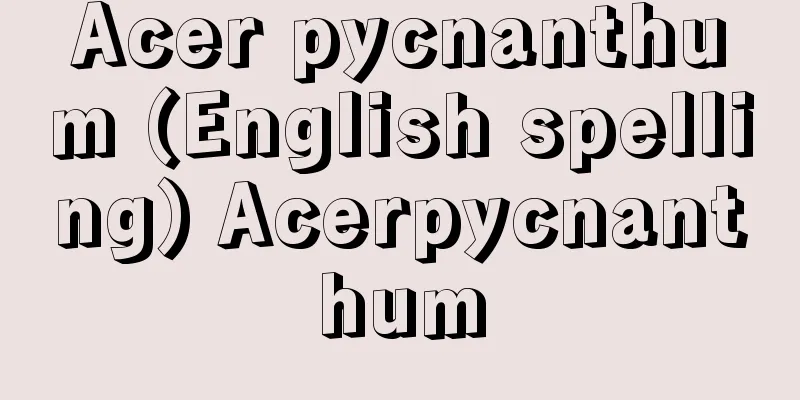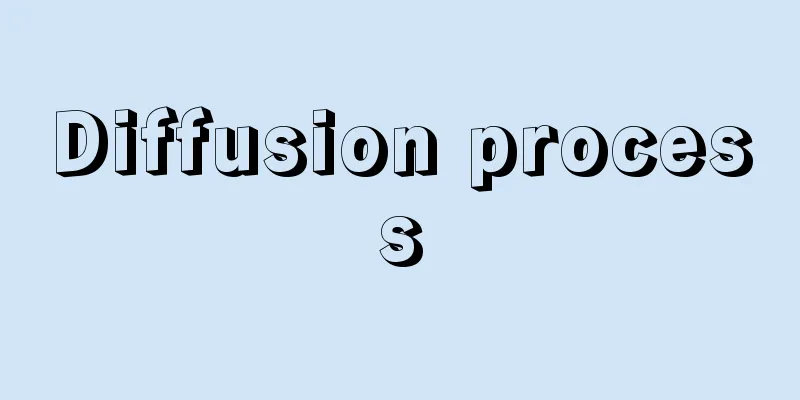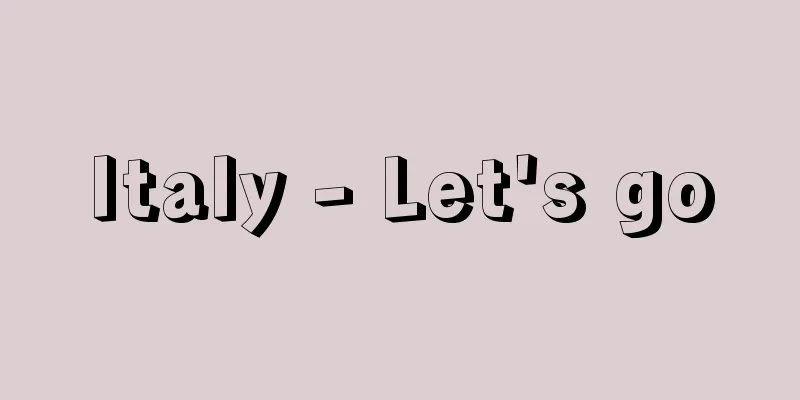Curriculum
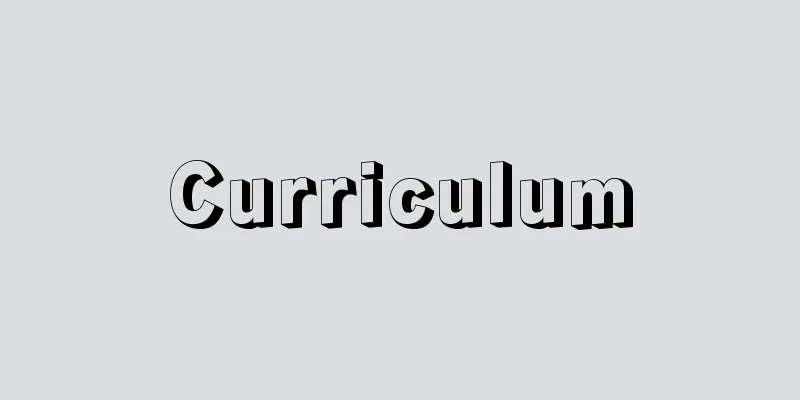
|
A curriculum is a systematic organization and presentation of educational content and learning activities for an institutional educational institution to achieve its educational objectives. The word originates from the Latin currere, meaning to run or runway. Just as a resume is called curriculum vitae in English, it refers to the overall history of learning and the specific content of the path experienced. In Japanese, it is called the curriculum. Before and after the war, the words "subject curriculum" and "academic curriculum" were used, and the term "curriculum" was not used. The term "curriculum" was first used in the revised Course of Study in 1951, and since then it has become common in school education. In Japan, where centralization is strong, the Course of Study as a national curriculum plays a role of directing the educational content as a general guideline. However, in some countries, there is no unified curriculum, and education is implemented according to the local curriculum set by the state or city. The standards for the curriculum, such as the Course of Study, are set out in Articles 25, 54-2, 57-2, 65-5, 73-10, and 76 of the Enforcement Regulations of the School Education Act. In other words, the curriculum is divided into subjects and non-subjects, such as "morals, special activities, and integrated learning time," and the content to be taught is set and arranged for each grade level. Based on these Courses of Study, each local government and each school organizes educational activities, including plans and implementation methods, in accordance with the actual situation of the students they teach. The word "curriculum" is often used quite broadly to include annual teaching plans, learning unit plans, and teaching material development. In reality, local boards of education are supposed to make plans based on the national curriculum guidelines, according to the local conditions, and schools are supposed to make plans based on the educational goals and the actual situation of their students. However, in some cases, what schools themselves make is limited to creating educational goals and organizing timetables. The planned curriculum and the actual lessons are not necessarily the same. This is because the educational content taught and implemented by individual teachers is not the same as the content experienced and learned by each child in the class who participated in the lesson. There are cases where teachers think they have taught something, but the students have not actually learned it, and there are also cases where teachers teach things that go beyond the plan, or the students pursue the content through their efforts and learn it more deeply or in more detail. Therefore, it is important to consider the totality of the students' learning experiences as a curriculum as an experience, and to specifically evaluate the discrepancy between the content and the curriculum content at the time of planning, that is, to look back and evaluate the teaching plan and the educational course, and to make further improvements. In contrast to the curriculum that is intended by schools and teachers and explicitly shown in textbooks and teaching materials, an unintentional power structure is created in the classroom at school, and students learn to obediently follow the social control and regulation of powerful teachers. Jackson, P., called this the hidden curriculum or latent curriculum. Jackson pointed out "herds," "praise," and "power" as characteristics of the classroom, and said that students learn to behave in a way that corresponds to the hidden curriculum. With the discovery of this hidden curriculum, the intentional and planned curriculum is sometimes called the official curriculum in contrast to the hidden curriculum. This concept made it clear that the curriculum is not just about learning cognitive content, but also has political and social meanings. Through the experience of both the explicit and latent curriculum, students form certain behavioral patterns, values, and attitudes in the school environment, in addition to the educational content. For this reason, stereotyping of characters in textbooks and gender, etc. have been critically examined from the perspective of the political function of the curriculum in schools. [Principles of curriculum organization] There are two fundamental traditional approaches to curriculum content: formal cultivation and substantial cultivation. Formal cultivation is a philosophy centered on the cultivation of abilities, which holds that the purpose of education is to train and improve general formal abilities such as memory, reasoning, concentration, and thinking ability. It is therefore believed that teaching formal logical content such as mathematics and Latin is effective in education. In contrast, substantial cultivation is a content-centered approach that emphasizes the study of subjects that are immediately useful in daily life, and allows students to acquire knowledge and skills in each area. In other words, it can be said to be a philosophy of teaching material cultivation that emphasizes the inheritance and development of cultural heritage. While inheriting the conflict between these two ideas, historically, three methods of organizing a curriculum have been proposed based on principles. The first principle is to organize the curriculum based on the logical system of educational content, based on the parent academic system as a cultural heritage. The second principle is to organize educational content that will prepare students to become members of society and to be able to respond to the realities of social life in each region in the future. And the third principle is to organize content so that students can pursue what they want to learn based on their interests and concerns, and to organize learning tasks based on what the children want to learn. The curriculum based on the first principle is the discipline-centered curriculum. The origin of subjects lies in the seven liberal arts of ancient Greece and Rome, namely the three sciences of grammar, rhetoric, and dialectics and the four arts of arithmetic, geometry, astronomy, and music, from which the principle of the systematic nature of science, technology, and art emerged as the background for subjects. It is the idea of a stepped curriculum that arranges the content so that it can be acquired systematically, separate from the context of real life, so that the content that is the cultural heritage accumulated by humanity can be efficiently, effectively, and accurately conveyed to the next generation and the necessary education can be acquired. However, in reality, as the parent discipline developed, the relationship and discrepancy between the systematization of the discipline and the teaching content was pointed out and questioned. One example of this was the curriculum reform movement known as the "modernization of educational content" that took place from the late 1950s to the 1960s. In the United States, in response to the recognition that school education was lagging behind the rapid growth of science and technology after World War II, curriculum development was carried out as a concrete method for modernizing the content of education, mainly in natural science education projects, in primary and secondary education. In this context, educational psychologist Bruner, JS (1963) called the basic concepts underlying academic subjects structures, and argued that the basic concepts and structures of academic subjects should be identified and elucidated, and that these structures should be taught to children. This idea was developed through discussions between scientists and educational psychologists, and became the basis for curriculum reform in the United States. Bruner believed that by organizing the curriculum and teaching methods, "any subject can be effectively taught to children at any stage of development while maintaining its intellectual character." In other words, he believed that it was desirable to organize the curriculum in a way that systematically repeats the same basic concepts in a spiral shape, based on continuity and gradual development. Based on this idea, leading scientists in the United States were involved in writing secondary education textbooks, and mathematics textbooks (SMSG) and biology textbooks (BSCS) were developed. Bruner also advocated discovery learning, in which students are encouraged to engage with teaching materials, take an inquiry process based on intuition and scientific verification, and discover scientific concepts and laws on their own, rather than teachers simply explaining and teaching. He argued that by having students experience discoveries similar to those made in culture and science, they would learn not only the content of the study but also how to make discoveries. The background to Bruner's theory is Piaget's theory of stages of cognitive development. This theory is called the spiral curriculum because it proposes that children experience and learn from a curriculum organized in a spiral fashion, with stages in accordance with the process of cognitive development: 1) behavioral understanding, where things are understood through behavior; 2) eidetic understanding, where things are understood through visual or auditory images; and 3) symbolic understanding, where things are understood through linguistic symbols. After the war, Japan was also strongly influenced by American education, and private educational organizations sought to develop science curricula that promoted the systematic study of science, with an emphasis on discovery learning. Of the three principles of curriculum organization, one of the ideas of curriculum based on the second principle is the cross-curriculum, or interdisciplinary curriculum. Cross-curriculum is a concept proposed by Radner, HA in the UK Education Reform Act of 1988, which states that in order to study modern social issues that are interdisciplinary and comprehensive in nature, it is desirable to implement educational content based on each issue by linking multiple subjects. Examples of issues that cannot be dealt with by the systematization of the parent discipline alone include curricula that are organized to take up modern social issues that will be important for students' future social lives, such as the environment, citizenship education, human rights education, and career education. Thematic learning and project learning that integrates knowledge beyond the boundaries of subjects are often carried out across subjects in the same grade or during integrated learning time, but there are also cases where a certain issue is taken up within a subject. There are also cases where the whole school investigates the issue during special events such as environmental week. One of the curricula based on the third principle is the core curriculum. Dewey, J., advocated that the content of education should be organized into "units" consisting of activities centered on tasks related to the core subject matter that children are interested in. The idea of learning is to have learners explore and express the subject matter themselves, and this is a major difference from the step-type curriculum based on the first principle of systematicity, in that it is a concept that seeks to grasp learning in a multi-dimensional way. The core curriculum was centered on the University of Chicago Laboratory School, and began in the United States as part of a child-centered new education movement, and has had a global impact. In Japan, child-centered life education was practiced in "children's villages" during the Taisho period in the 1920s and the early Showa period. It was just after the end of the war that the core curriculum was clearly called the core curriculum, and a core curriculum movement with the characteristics of problem-solving learning and interdisciplinary learning was implemented. However, the implementation of this core curriculum was sluggish due to criticism of declining academic ability and emphasis on systematic knowledge. Later, in the 1990s, the importance of life studies and integrated learning time was pointed out, and it began to be emphasized again. Discussions about the three principles of curriculum organization have swung back and forth like a pendulum as to which principle is emphasized, depending on the academic ability and social background that is valued at the time. However, in actual public education, such as schools, it is rare that a curriculum has been organized and implemented based on only one of the organizational principles. The current situation is that schools and teachers organize and implement curricula according to the content of various subjects and the developmental stage of students. [Curriculum development and organizational styles] Curriculum organization is carried out through the continuous, progressive work of planning, implementing, evaluating, and reorganizing the curriculum, and is therefore called curriculum development. This style of developing and organizing the curriculum can be broadly divided into two. One is a style that organizes around the goals of education, and the other is a style that organizes around the themes of education. As the former, Tyler, RW (1949) argued that the organization of a curriculum is realized by systematically organizing and arranging four elements: educational objectives, organization of contents, teaching and learning methods, and evaluation. When organizing a curriculum, two important points must be considered: first, the "scope" of what contents should be divided into what areas and organized; and second, the order of the arrangement of the contents, that is, in what "order" it is most effective to experience the contents. The first point is called the scope (range, area), and the second point is called the sequence (arrangement). Scope refers to the extent of the contents and the scope or area to be classified for teaching and learning in accordance with the educational objectives. Sequence refers to the issue of in what order the contents should be presented and learned effectively according to the child's developmental stage. The two are closely related, and the general principle of classification is that as students move from the lower grades to the higher grades, the content becomes more detailed, from comprehensive to differentiated. It is also said that due to real-world social demands and challenges, students are required to learn the differentiated learning content in a more integrated manner through problem-solving, etc. This style is based on the lineage of social efficiencyism based on behavioral science, which selects specific content from educational goals, organizes educational content systematically, and evaluates it. In addition, Bloom, BS (1956) proposed a method of classifying educational goals into three areas, "cognitive, affective, and motor skills," and further subdividing them. In other words, the aim is to organize an educational program as a curriculum based on educational goals, with the unit of "goal (plan)-achievement-evaluation," and development and verification are carried out using behavioral science methods. Specifically, the steps are "clarifying the desired results," "determining acceptable evidence," and "planning learning experiences and instruction." In this way, systematicity and efficiency are guaranteed by defining it in a detailed, step-like manner. In this approach, it is important that the evaluation method is designed to be consistent and detailed with respect to the area and level of the curriculum. For this purpose, tests based on unified achievement standards are created to evaluate students' achievement. In addition, this method is called teacher proof curriculum because it requires various teachers to follow the same curriculum, implement it, verify it, and refine it in the development process, so that any teacher can achieve a certain level of results, even though each teacher has different strengths. This curriculum emphasizes the "research, development, and dissemination" approach to curriculum development. This process has the advantage that any teacher can visualize the path to students' learning experiences, the accompanying teaching methods, and easily diagnose learning. However, on the other hand, it has been pointed out that these advantages have some drawbacks, such as the fact that the role and ability of teachers, who are the main actors in educational practice, is neglected, leading to the idea that as long as a good program is developed, educational results can be obtained regardless of the teacher's ability, that evaluation of students' learning is limited to the perspective planned by the teacher, so if students stumble along the way, they are likely to lose interest and fall behind, and that the standardization of evaluation creates a competitive spirit among learners.In addition, while the popular model brings about efficiency by standardizing educational practice into one best method, it has the disadvantage of abstracting the autonomy and diversity of schools and teachers. In the 1960s in the United States, many teacher-proof curricula were created. However, their effectiveness was not as high as expected, so the approach to curriculum development changed from the idea of formulating a curriculum that any teacher could follow to the opposite idea of placing emphasis on improving the professional qualities of teachers, who would design and implement the curriculum and lessons themselves. The other style, which is centered on the theme of education, develops the curriculum in units of "theme-inquiry-expression." Based on Dewey's ideas, this was developed in the United States by WH Kilpatrik and others as the project method, which uses purposeful activity as a unit. In Europe, education by Steiner, R. in Germany and Freinet, C. in France are also advocating a form of education based on a project-based curriculum, in a different vein from that in the United States. These styles of curriculum development follow a process of "practice-criticism-development," with the central location of curriculum development being the classroom where learning experiences are created, and the learning process and curriculum development being one and the same process. Furthermore, rather than being evaluated based on preset goals outside of the classroom, emphasis is placed on the students' records of their learning process and experiences, and their quality is questioned. Teachers develop and structure teaching materials and curricula by critiquing each other's classroom practices, so teacher professional development and curriculum development are thought to be carried out simultaneously. In the UK in the 1970s, the action research undertaken by Stenhouse, L. and others in the secondary education humanities curriculum is well known, and curriculum development using this method is carried out at the school level through the collaboration of teachers. Curriculum development begins with an examination of records of learners' learning processes in specific lessons. With the advancement of learning science in the 21st century, design principles for learning are derived based on the uniqueness of the subject content and theories of learning, and teachers themselves work with researchers to put them into practice and mutually evaluate them. This allows for consideration of whether the acquisition of knowledge of the curriculum content is not merely fragmentary but consistent, integrating students' knowledge, and exploring the nature of the curriculum based on the quality of students' participation in learning and the quality of their inquiry. →Open School →Teaching and Learning →Free School [Akita Kiyomi] Latest Sources Psychology Encyclopedia Latest Psychology Encyclopedia About Information |
|
カリキュラムとは,制度的な教育機関が教育目的を達成するために,教育内容と学習活動について組織全体で計画的に編成し示したものである。語源はラテン語のクレレcurrereであり,走る,走路の意味である。履歴書を英語ではcurriculum vitaeとよぶように,学びの総体としての履歴,経験された道筋の具体的内容のことを指す。日本語では,教育課程とよばれる。戦前と戦後初期には,教科課程あるいは学科課程ということばが使われており,教育課程の語は使用されてはいなかった。1951年に改訂された学習指導要領において初めて教育課程の語が使われ,それ以後,学校教育において一般化して使用されるようになった。中央集権制が強い日本では,ナショナルカリキュラムとしての学習指導要領course ef studyが,大綱として教育内容を方向づける役割を担っている。しかし国によっては,統一したカリキュラムはなく,州や市が定めた各地域でのカリキュラムにより教育が実施されている所もある。 学習指導要領等の教育課程の基準は,学校教育法施行規則第25条,第54条の2,第57条の2,第65条の5,第73条の10,第76条において定められている。すなわち,教科および教科外の「道徳,特別活動ならびに総合的な学習の時間」に分けられて編成され,学年の枠ごとに指導すべき内容が設定して配列され編成されている。この学習指導要領に基づき,各自治体や各学校が指導する生徒の実態に合わせて,教育活動の計画と実施様態を含め編成している。年間指導計画や学習単元計画,教材開発なども含めて,カリキュラムという語をかなり広く使用している場合も多い。 実際には,国の制定した学習指導要領に基づき,地域の教育委員会がその地域の実情に応じて,また学校が各学校の教育目標と生徒の実態に基づいて計画を立てることになっているが,学校が主体として編成しているものは,教育目標の作成や時間割等の編成に限定されている場合もある。あらかじめ計画したカリキュラムと実際の授業は必ずしも同一とは限らない。なぜなら,個々の教師が指導し実施した教育内容と,その授業に参加した学級の一人ひとりの子どもが経験し学習した内容は,同一ではないからである。教師側は指導したつもりであっても,生徒は実際には学習できていない場合も生じるし,教師が計画を超えた内容を指導したり,生徒側の働きかけによって追究がなされ,より深くあるいはより詳しく学ばれている内容もある。そこで,生徒側の学習経験の総体を経験としてのカリキュラムととらえ,その内容と計画時のカリキュラム内容とのずれを具体的に評価することが,すなわち指導計画および教育課程を振り返って評価し,さらなる改善を図っていくことが重要となる。 また,学校や教師が意図し教科書や教材によって明示的に示されるカリキュラムに対し,学校という場では教室内に無意図的な権力構造が生まれ,権力をもった教師の社会的支配や統制に対して生徒たちは従順に従うことを学んでいるとし,ジャクソンJackson,P.は,それを隠されたカリキュラム,または潜在的カリキュラムhidden curriculumとよんだ。教室という場の特徴として,ジャクソンは「群れ」「賞賛」「権力」を指摘し,その隠されたカリキュラムに対応した行動を生徒は学んでいくとした。この隠されたカリキュラムの発見により,意図的,計画的なカリキュラムは,隠されたカリキュラムとの対比として顕在的カリキュラムofficial curriculumとよばれることもある。カリキュラムは,認知的な内容の学習だけではなく,それが政治的,社会的な意味内容をも有していることがこの概念により明らかにされた。生徒は顕在的カリキュラムと潜在的カリキュラムの両者の経験を通して,教育内容と同時に,学校という場での一定の行動様式や価値観,態度を形成していく。そのため教科書に掲載された登場人物のステレオタイプ化やジェンダーなどについても,学校でのカリキュラムのもつ政治的機能の観点から批判的に検討がなされてきている。 【カリキュラム編成の原理】 カリキュラムの内容に関する根本的考え方としては,形式陶冶と実質陶冶という二つの考え方の伝統がある。形式陶冶の考え方は,教育の目的は,一般的な形式的能力としての記憶力や推理力,集中力,思考能力などを訓練し高めることにあるとする能力陶冶を中心とする考え方である。したがって,数学やラテン語の学習など形式論理的な内容の指導が教育において効果的であると考える。これに対して,実質陶冶の考え方は,生活にすぐに役に立つ科目の学習を重視し,領域ごとに知識や技能を獲得させる内容中心の考え方である。すなわち,文化的遺産の継承発展を重視する教材陶冶の考え方といえる。 この二つの発想の対立を継承しながら,歴史的には三つの原理に基づくカリキュラムの編成方法が提案されてきた。第1は,文化遺産としての親学問の体系を基礎として,その教育内容の論理的系統性に基づいて編成するという原理である。第2は,将来において各地域での社会生活の現実に対応できるように,社会の一員になるための準備となる教育内容を組織するという原理である。そして第3は,学習者である子どもの興味や関心に基づき学びたいとする内容を中心にして追求できるように内容を編成し,子どもの求めの側から学習課題を組織していくという原理である。 第1の原理に基づくカリキュラムには,ディシプリン中心カリキュラムdiscipline-centered curriculum(学問中心教育課程)がある。教科の起源は,古代ギリシア・ローマの自由七科,すなわち文法・修辞学・弁証法の三学と算術・幾何・天文・音楽という四芸にあり,そこから教科の背景には科学,技術,芸術の系統性の原理が生じてきた。人類が蓄積してきた文化遺産としての内容を次世代に効率的,効果的かつ正確に伝え必要な教養を習得できるように,現実の生活の文脈とは切り離して,その内容を体系的に習得できるよう配列する階段型カリキュラムの発想である。 しかし実際には親学問の発展とともに,学問の系統性と指導内容間の関連やその乖離も指摘され,問われてきた歴史がある。1950年代後半から1960年代にかけて,「教育内容の現代化運動」とよばれたカリキュラム改革の動きもその一つである。第2次世界大戦後の科学技術の急速な成長に対して学校教育が立ち遅れていることへの認識から,アメリカにおいて教育内容の現代化として,初等中等教育で,主に自然科学教育のプロジェクトで具体的方法としてカリキュラム開発が行なわれた。 こうした時代背影のもとで,教育心理学者であるブルーナーBruner,J.S.(1963)は,学問の根底にある基礎的な概念を構造とよび,学問(教科)の基本的概念と学問の構造を同定・解明して,その構造を子どもたちには教えるべきであると主張した。この思想は科学者と教育心理学者の間での議論によって展開され,アメリカのカリキュラム改革の基点となった。ブルーナーは,カリキュラムの編成と指導法によって「どの教科でも,知的性格をそのままに保って,発達のどの段階の子どもにも効果的に教えることができる」と考えた。すなわち,同一の基本概念を連続性と緩やかな発展性を踏まえてラセン状に繰り返しながら系統づけていくカリキュラム編成が望ましいという考えたのである。この思想のもとでアメリカでは第一線の科学者が中等教育の教科書執筆に携わり,数学教科書(SMSG)や生物教科書(BSCS)などが開発された。 ブルーナーはまた,教師が一方的に説明し指導するのではなく,学習者が教材とかかわり,直観と科学的な検証に基づいて探究の過程を取り,科学的な概念や法則を自ら発見していくようにする発見学習discovery learningを提唱した。そして文化や科学の発見に似た発見を生徒に体験させることにより,学習内容だけでなく発見の方法も学習されるとした。 このブルーナーの理論の背景にあるのは,ピアジェPiaget,J.の認知発達の段階理論である。この理論は認知発達の過程に沿って,①行動を通して事物を把握する行動的把握の段階,②視覚ないし聴覚的イメージを通して把握する映像的把握,③言語記号を通して把握する記号的把握の段階が,ラセン状に系統づけられたカリキュラムを子どもが経験し学習することを提案したことから,ラセン型カリキュラムspiral curriculumとよばれている。 日本でも終戦後,アメリカの教育の影響を強く受け,民間教育団体によって科学の系統的学習を進める科学カリキュラムの開発が追求され,発見学習が重視された。 カリキュラム編成の三つの原理のうち,第2の原理に基づくカリキュラムの考え方の一つに,クロスカリキュラムcross-curriculum,すなわち教科横断型カリキュラムがある。クロスカリキュラムは,1988年のイギリスの教育改革法でラドナーRadner,H.A.が提案した,学際的,総合的な性質をもつ現代社会の問題を学習させるためには,各々の問題をテーマとした教育内容を複数の教科をつなぐことで実施するのが望ましいとする考え方である。親学問の系統性のみでは取り扱うことのできない問題として,たとえば環境,市民教育,人権教育やキャリア教育など,生徒の将来の社会生活に重要になる現代社会の問題を取り上げて編成するカリキュラムが,例として挙げられる。教科の枠を越えて知識を統合するような主題学習やプロジェクト学習を,同学年で科目横断的に実施したり総合的な学習の時間などを活用して実施する場合が多いが,教科の中である課題を取り上げて行なっていく場合もある。また環境週間など特別な行事などの時間に学校全体でその問題を追究するというような場合もある。 第3の原理に基づくカリキュラムの一つに,コアカリキュラムcore-curriculumがある。デューイDewey,J.は,子どもの興味関心のある主題内容をコアとし,その主題と関連した作業を中心とした活動から構成される「単元」によって教育の内容を編成することを主張した。学習者自身が主題を自ら探求し表現していくことによって,学びを多元的にとらえようとする考え方であることが,第1の系統性原理に基づく階段型カリキュラムとの大きな相違である。コアカリキュラムは,シカゴ大学付属実験学校を中心にし,児童中心主義の新教育運動の中でアメリカを中心として始まり世界的に影響を与えた。日本でも,1920年代の大正期,昭和初期に児童中心主義の生活教育が「児童の村」などにおいて実践された。コアカリキュラムと明確によばれたのは終戦直後であり,問題解決学習や合科学習の性質を有したコアカリキュラム運動が実施された。しかしその後,学力低下批判や系統的知識の重視によって,このコアカリキュラムの実践は低調となった。その後,1990年代になって,生活科や総合的な学習の時間の重要性が指摘されることで,また新たに重視されるようになった。 三つのカリキュラム編成の原理は,どの原理が重視されるかがその時代に重視される学力や社会的背景によって振り子のように議論が揺れ動いてきている。しかし実際の学校という公教育においては,どれか一つの編成原理だけでカリキュラムが編成され実施されてきたことは少ない。さまざまな教科内容や生徒の発達段階に応じて,学校や教師が編成し実施してきているのが現状である。 【カリキュラム開発,組織化の様式】 カリキュラムの編成は,カリキュラムの計画,実施,評価,再編成という連続的,発展的な作業を通して実施されるため,カリキュラム開発とよばれる。このカリキュラムを開発し組織化する様式は,二つに大別できる。その一つは,教育の目標を中心に組織する様式であり,もう一つは教育の主題を中心にする様式である。 前者として,タイラーTyler,R.W.(1949)は,カリキュラムの編成は,「教育目標,内容の組織,教授と学習の方法,評価」の4要素を計画的に編成・組織し実現されていくものと主張した。カリキュラムを編成するにあたっては,第1にどのような内容をいかなる領域に分けて編成・組織するのかという「範囲」と,第2にそれらの内容をどのような「順序」で経験していくのがより効果的かという配列の順序性の二つの点が重視すべき問題になる。なお,第1の点をスコープscope(範囲,領域)とよび,第2の点をシークエンスsequence(配列)とよぶ。スコープとは,教育目標に対応して,どこまでの内容をどのような範囲や領域に分類して教授学習を行なうかである。またシークエンスとはその内容を子どもの発達段階に応じてどのような順序で提示して学ばせていくのが効果的であるのかという問題である。両者は密接に関連しており,分類の一般的な原則としては,低学年から高学年になるにつれて,総合から分化へと,内容はより詳細に向かうのが一般的であり,また現実の社会的な要請や課題により,分化して指導された学習内容をさらに統合的に問題解決などを通して学ぶことも求められるとしている。 この様式は,カリキュラムを,教育目標から具体的に内容を選択し,教育内容を系統的に編成して評価を行なうという行動科学による社会的効率主義の系譜に基づいている。また,ブルームBloom,B.S.(1956)は,教育目標を「認知・情意・運動技能」の3領域に分類し,さらに細分化する方法を提案している。すなわち,教育目標から「目標(計画)-達成-評価」を単位として,カリキュラムとしての教育プログラムを編成することがめざされ,行動科学の方法を用いて開発・検証が進められる。具体的には「求めている結果を明確にする」「承認できる証拠を決定する」「学習経験と指導を計画する」というステップとなる。このように,階段型の細かな段階によって規定することで系統性と効率性を保障するのである。 この考え方においては,評価の方法とカリキュラムの領域やレベルが整合し詳述されているようデザインされることが重要となる。そのため一元的な到達度基準によるテストを作成し,生徒の到達度を評価する方法が取られる。また,この方法では,教師によって得意な側面が異なっているにもかかわらず,どの教師が指導しても一定の成果を上げるために,さまざまな教師が同じカリキュラムをたどって実施・検証して洗練することが開発の過程で必要となるためティーチャー・プルーフ・カリキュラムteacher proof curriculumとよばれる。このカリキュラムでは,「研究・開発・普及」というカリキュラム開発のあり方が重視される。この過程は,どの教師においても,生徒の学習経験を積み上げる道筋の可視化とそれに伴う指導方法,そして学習の診断が容易であるという利点をもつ。しかしこの利点は反面では,教育実践の主体である教師の役割や能力は軽視され,良いプログラムが開発されさえすれば,教師の力量とは関係なく教育結果は得られるとする考えをもたらすこと,生徒の学習において,教師が計画した視点に評価を限定するために,生徒は階梯途中でつまずくと興味関心を失い落ちこぼれやすいこと,評価の一元性が学習者間での競争意識を生み出すことなどが弊害として指摘されている。また,普及モデルは教育実践を一つの最善の方法へと画一化することで効率化をもたらす一方で,学校や教師の自律性や多様性を捨象するという弊害をもつ。 1960年代のアメリカにおいては,数多くのティーチャー・プルーフ・カリキュラムが作成された。しかし,その効果は現実には期待するほど上がらなかったため,どの教師もできるカリキュラムを策定するという考え方よりも,それとは対照的な考え方として,カリキュラムや授業を教師自らがデザインし実施していく教師の専門性の資質の向上を重要視する方向に,カリキュラム開発のアプローチは変化していくようになった。 もう一つの様式である教育の主題を中心とする様式では,「主題-探究-表現」の単位でカリキュラムが開発される。これは,デューイの思想に基づき,アメリカではキルパトリックKilpatrik,W.H.らによって,目的的活動を単位とするプロジェクトメソッドproject methodとよばれ開発されている。ヨーロッパにおいても,ドイツでのシュタイナーSteiner,R.による教育や,フランスでのフレネFreinet,C.による教育等が,アメリカとは異なる流れの中で,プロジェクト型のカリキュラムに基づく教育のあり方を提唱している。 これらのカリキュラム開発の様式は,「実践-批評-開発」の過程をたどり,カリキュラム開発の中心的場は学習経験が創造される教室であり,学習過程とカリキュラム開発は同一の過程である。また,授業の外側であらかじめ設定された目標によって評価するのではなく,生徒による学習の過程と経験の記録が重視され,その質が問われる。授業実践を教師同士が批評することによって,教材とカリキュラムを開発・構成していくため,教師の専門性開発とカリキュラム開発は同時に実施されると考えられる。イギリスでは1970年代に中等教育人文科学のカリキュラムにおいて,ステンハウスStenhouse,L.らが取り組んだアクションリサーチが有名であり,その手法による,カリキュラムの開発が,教師の協働により学校単位で実施されている。 カリキュラム開発は,具体的な授業における学習者の学習過程の記録の検討を出発点として実施される。21世紀になり学習科学の進展によって,学習のデザイン原理を当該の教科内容の独自性と学習の理論に基づいて導出し,教師自身が研究者と協働し実践し相互に評価していくかたちで取り組んでいる。それによってカリキュラム内容の知識の習得が断片的な内容の習得にとどまらず一貫性をもち,生徒の知識を統合していくものとなっているかが検討され,また生徒の学習への参加の質,探究の質に基づきカリキュラムのあり方が模索されている。 →オープンスクール →教授学習 →フリースクール 〔秋田 喜代美〕 出典 最新 心理学事典最新 心理学事典について 情報 |
<<: Curriculum 68 - Curriculum 68
Recommend
Expectants - expectorants
Medicines that make it easier to expectorate phleg...
Iwaonupuri
A lava dome (bell-shaped volcano) belonging to the...
Ministry of Greater East Asia
Following the expansion of the occupied territori...
Smith, T.
...Since the late 1960s, the concept of art has b...
Atbara [River] - Atobara
… [Nature] Sudan, which straddles the tropics bet...
Lady Vimalakirti - Idakebunin
Date of birth and death unknown. Queen of Bimbisa...
Norihiro Ouchi
Year of death: September 3, 1465 (September 23, 14...
Falsetto - Uragoe
A high, soft voice produced for special effects i...
Coronary arteriovenous fistula - Kanjodo
…When coronary artery blood flow is temporarily i...
Compression molding
...The following describes typical molding method...
Processing metallurgy
...The importance of chemical metallurgy, which h...
O intemerata (English spelling)
...In addition to these two theories, there is al...
Cinchona ledgeriana (English spelling) Cinchona ledgeriana
…[Mr. Makoto Fukuoka] [Mr. Aya Nitta]. … *Some of...
Adīb Isḥāq
1856‐85 A Syrian Christian. After receiving his ed...
Ten Good Deeds
〘Noun〙 Buddhist term. 1. To not commit the ten evi...

